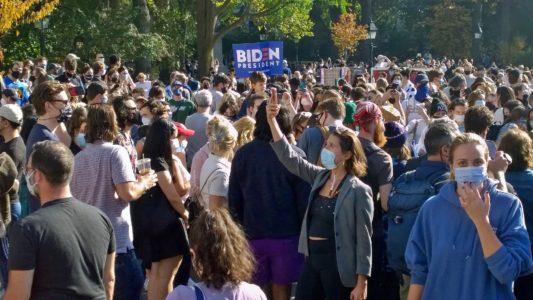With petitions signed and signatures in hand, three local community leaders took to City Hall on Wednesday, August 26, in hopes of getting the mayor’s attention in regards to the much-protested Southwest Brooklyn waste transfer station.
After a letter written to the Environmental Protection Agency (EPA) outlining several complaints from community members and multiple violations of the Clean Water Act was submitted by Anti-waste Task Force co-chairs Nancy Tong and Charles Ragusa last month, Tong, Assemblymember William Colton and Councilmember Mark Treyger delivered the petitions—signed by thousands of community members—to City Hall.
“We wanted to formally present to City Hall the results of hundreds of letters and thousands of signatures against the garbage station that we’ve collected in recent months,” said Colton, who has spearheaded the fight against the waste transfer station for quite some time and started a Neighborhood Watch initiative that urges community members to look for and report any violations happening at the construction site. “We wanted to hand them down and present them to the City Hall desk.”
Included in the violations submitted to the EPA was a lack of protective netting to prevent debris and soil from discharging into nearby waters, debris and soil that was left uncovered, and an oil slick that formed by the water’s edge near the site of the station – some of the main concerns of the local leaders.
“Many people have responded to my call, taking photos, videos and frankly I am very concerned by what we have here,” said Colton. “There are other pictures that show small pieces of debris, soil, dirt and garbage all around the waters of the garbage transfer station work sight. Things are getting into the waters from this work. We have other pictures that actually show the area by the ramp, right below, where you can see the debris in the water and dying trees [around the area].”
The station—which would be built on the site of the reviled Bensonhurst incinerator which operated without a permit from the 1950s through the 1980s, has aroused several concerns since its proposal by the Department of Sanitation (DOS) as part of the city’s Solid Waste Management Plan (or SWMP).
Among these concerns is the impact of truck traffic on nearby residents, a potential increase in traffic congestion, and the possibility that necessary dredging would bring up toxins from the old incinerator and potentially disturb unexploded munitions dating back to World War II now at the floor of Gravesend Bay.
Colton expressed that, while the trio did not get to see Mayor Bill de Blasio at City Hall that day, he hopes that he, and his administration, will take this issue seriously.
“I think we, at this point, we are saying [that while] this originally had been the plan of a former Mayor, the current Mayor is building it and therefore [he] is going to be held responsible and accountable for what happens as a result of what he is building,” he said. “There are so many negative consequences.”

 Locals weigh in after Biden declares victory
Locals weigh in after Biden declares victory